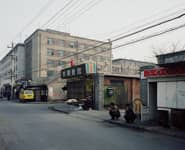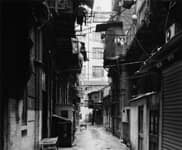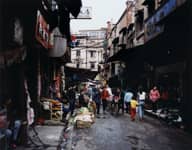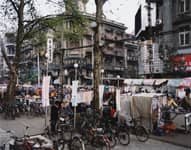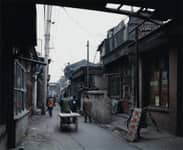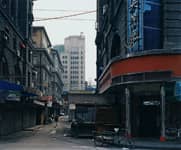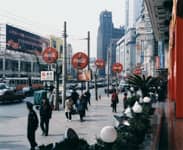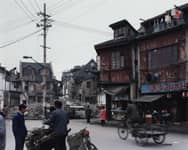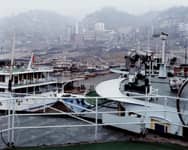In the early 1980s Struth became friends with the psychoanalysts Hannah Erdrich-Hartmann and Ingo Hartmann. Hannah had first visited China in 1972 and had a deep knowledge of the country and its history. Together with the couple and a group of other friends, Struth began studying Tai Qi with the master Ma Jiang Bao in Düsseldorf in the late 1980s. The group then decided to undertake a series of study trips to China and prepared by organising a seminar at which each of the participants gave a paper about one particular theme—Taoism, Buddhism, Chinese history, geography, painting, calligraphy, ceramics, etc. On his second visit to China in 1997, Struth took a portrait of the family of Ma Jiang Bao in Beijing as well as an individual portrait of Ma’s 97-year-old father, Ma Yue Liang.
In total Struth visited China four times between 1995 and 2002. The group travelled to Beijing, Shanghai and Wuhan, as well as through famous landscapes such as the Yangtse River, the Gobi Desert and Inner Mongolia and saw factories, farms and pilgrimage sites. The photographs Struth took in China depict historic landscapes, busy city streets and in one instance — Tian An Men Square, Beijing (1997) — a place of national ideological and political importance.
The frenetic experience of the urban environment in China stimulated a significant change in Struth’s approach to taking pictures of city streets. Many of the street photographs made in Beijing, Shanghai and Wuhan include crowds of people, cars and bicycles in addition to the dense urban environment. While working on the Museum Photographs, Struth had developed his observational skills so that he could read the movements of people within the viewfinder and wait until the configuration of people in the picture seemed right. He applied a similar technique in response to the challenge of the busy urban environments in China.
A small number of Struth’s Museum Photographs had depicted crowds of people in motion. Several street photographs from China, such as Jianghan Lu, Wuhan (1995), are almost overloaded with visual information, forcing the eye of the viewer to move restlessly across the picture. Other street photographs were made at the beginning of the day when the streets were comparatively empty and resemble more closely Struth’s earlier city photographs, although by this time he was working only in colour.
The first street photographs from China were presented in 1996 at an exhibition at the Marian Goodman Gallery in Paris entitled Photos de Chine.

